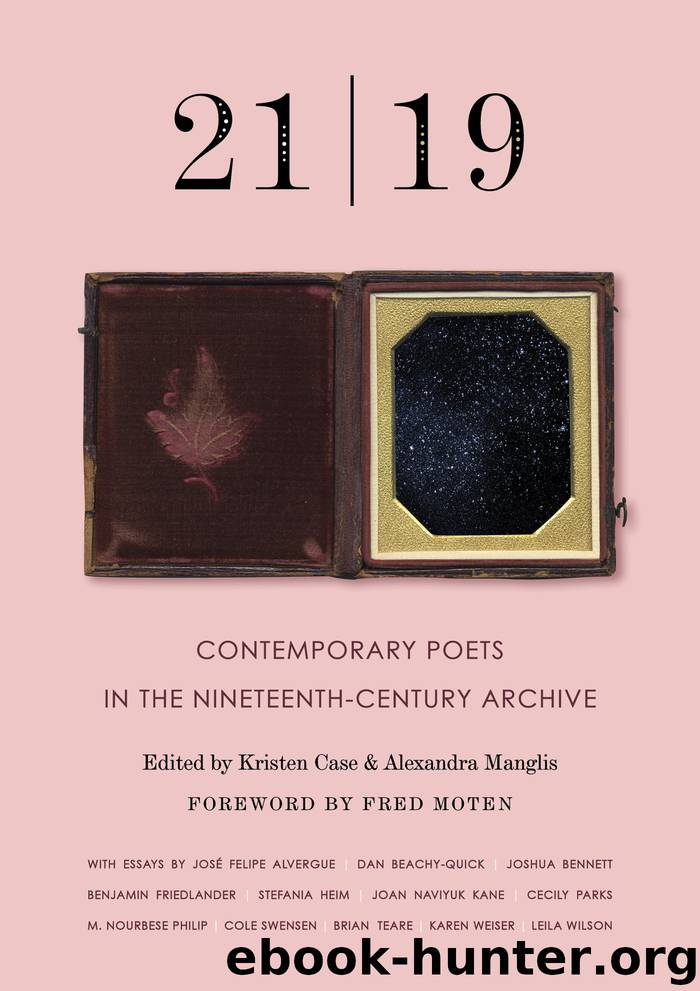21 | 19 by Unknown

Author:Unknown
Language: eng
Format: epub
Publisher: Milkweed Editions
Published: 2019-08-22T16:00:00+00:00
HENRY OSSAWA TANNER
NIGHT OVER NIGHT
Cole Swensen
We’re considering only the later works because it’s only in them that night becomes built of light and lets contradiction lock into place as the principal engine of Tanner’s oeuvre. It is a contradiction that he lived all his life, this active disruption of the distinction between dark and light, between black and white. Night, in which things become unfixed, unhinged, his late paintings—something flies apart in them; something flies within.
Christ walking on water, 1907, as is natural for him in his natural environment. And thus he becomes it, becoming just a slight stripe of the luminous, a vertical streak up the evening sky, as he walks toward the disciples through the lapis dusk, soft and dense.
And walking softly; this too epitomizes Tanner, a gentle man for whom painting a landscape was a mode of displacement, a form of travel, not only from one place to another
but from self to self,
one hand on the handle of a door.
One paints the handle, and then opens the door.
Le Touquet, c. 1910, on the Normandy coast, near their house in Trépied in the moon in the clouds
over the azure
is such an ocean heralding form
two people are heading home and two trees
that are still there, now in the sun.
Tanner became a leader of the artists’ community centered in the nearby fishing village of Étaples. International in nature, it thrived from the early 1880s to 1914, but never quite recovered from the war.
Tanner, however, continued to live there, with his wife and son and best friends, Atherton and Ingeborg Curtis. When his wife died in 1925, he moved to a different house, internalizing the shroud, and continued to live there until almost the end of his life, which he spent more or less rewriting the Bible from the perspective of night:
Sweep and glimpse
across a street
the ghost of blue
with a corner of the night sky in its eye
dotted with streetlights
or torches held up, allowing the sharp
leap into sight
to continue moving forward,
drawing the painting along in its wake, the disciples, the foolish virgins in the middle of this life in which night is the alive lit from within.
And given that painting is all about seeing,
to focus on the point at which
seeing breaks down,
breaks out into other senses,
puts pressure on intuition, on reflection, on invention, and every other way by which we see.
Tanner first left the US in 1891 on his way to Rome via London and Paris, but once in Paris, he simply didn’t move on, but instead started classes at the Académie Julian.
Tanner: Strange that after having been in Paris a week, I should find conditions so to my liking that I completely forgot when I left New York I had made my plans to study in Rome and was really on my way there…1
But let’s go back to the night,
and via the proposition that, for Tanner, painting offered a vehicle for overflowing circumstances and context, i.e., for flowing out of the United States, thereby eroding the boundaries of nation, self, and personal history.
Download
This site does not store any files on its server. We only index and link to content provided by other sites. Please contact the content providers to delete copyright contents if any and email us, we'll remove relevant links or contents immediately.
Becoming Supernatural by Dr. Joe Dispenza(8086)
Crystal Healing for Women by Mariah K. Lyons(7842)
The Witchcraft of Salem Village by Shirley Jackson(7171)
Inner Engineering: A Yogi's Guide to Joy by Sadhguru(6695)
The Four Agreements by Don Miguel Ruiz(6591)
The Power of Now: A Guide to Spiritual Enlightenment by Eckhart Tolle(5581)
Secrets of Antigravity Propulsion: Tesla, UFOs, and Classified Aerospace Technology by Ph.D. Paul A. Laviolette(5294)
The Wisdom of Sundays by Oprah Winfrey(5065)
Room 212 by Kate Stewart(5009)
Pale Blue Dot by Carl Sagan(4883)
Fear by Osho(4642)
The David Icke Guide to the Global Conspiracy (and how to end it) by David Icke(4601)
Animal Frequency by Melissa Alvarez(4382)
Rising Strong by Brene Brown(4359)
How to Change Your Mind by Michael Pollan(4273)
Sigil Witchery by Laura Tempest Zakroff(4162)
Real Magic by Dean Radin PhD(4062)
Man and His Symbols by Carl Gustav Jung(4053)
The Art of Happiness by The Dalai Lama(4047)
